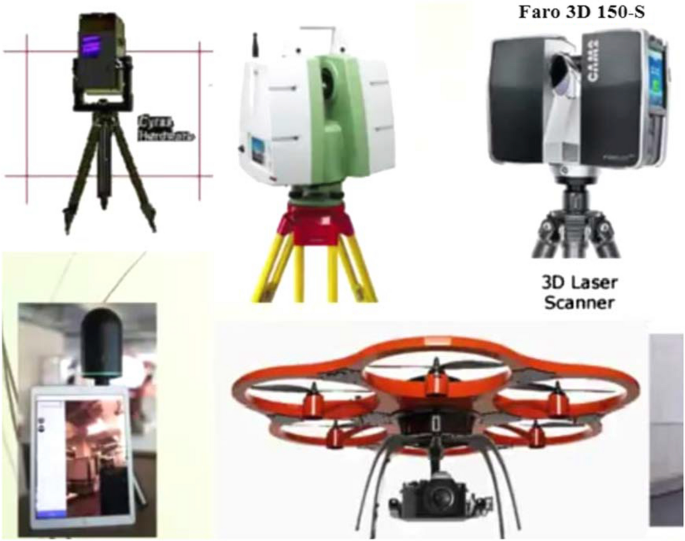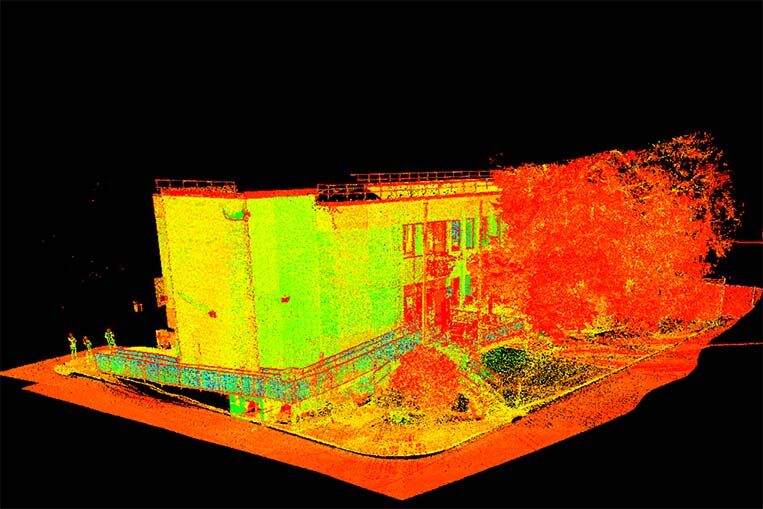The Future of Accuracy Dimension: Recognizing the Duty of 3D Laser Scanning Modern Technology
The landscape of precision measurement is developing with the arrival of 3D laser scanning modern technology. This innovation guarantees enhanced precision and performance throughout numerous fields. As sectors begin to welcome these improvements, the ramifications for job monitoring and implementation end up being progressively substantial. Nevertheless, the transformative results of this modern technology expand beyond simple numbers and measurements, hinting at a wider shift in just how specialists approach their job. What might this suggest for the future?
What Is 3D Laser Scanning Innovation?
3D laser scanning modern technology is an innovative approach used to record accurate three-dimensional dimensions of physical things and environments. This modern technology makes use of laser beams to accumulate information points, which are after that refined to produce thorough electronic representations of the scanned topics. By discharging thousands of laser pulses per secondly, 3D laser scanners can precisely tape-record the shape, dimension, and spatial relationships of different surface areas.
The process normally involves placing the scanner at different viewpoint to capture substantial information. The resulting factor cloud, a collection of numerous information points, can be assessed and exchanged 3D designs. Applications of this innovation span multiple fields, including design, heritage, and engineering conservation, where it helps in documentation and evaluation. As a non-intrusive method, 3D laser scanning lessens interruption to the atmosphere, enabling complete analyses of both existing structures and all-natural landscapes, thereby improving understanding and facilitating notified decision-making.
Key Benefits of 3D Laser Scanning in Various Industries
3D laser scanning modern technology supplies significant benefits throughout various industries by supplying enhanced precision and precision in dimensions. This innovation not just simplifies process but also results in considerable time and expense financial savings. As organizations significantly adopt this cutting-edge strategy, the advantages come to be noticeable in improved job outcomes and effectiveness.
Enhanced Accuracy and Precision
The integration of laser scanning innovation has revolutionized the way industries approach measurement and data collection. This innovation offers an extraordinary degree of precision, capturing countless information points in a single scan. As an outcome, specialists across various fields, such as design, engineering, and manufacturing, can produce very outlined 3D models that show real-world problems. Boosted precision decreases errors related to conventional measurement methods, ensuring that building and constructions and layouts are based upon accurate data. Additionally, the capacity to record intricate information permits for better analysis and decision-making, ultimately causing improved outcomes. By leveraging 3D laser scanning, markets can attain greater requirements of quality, making it a vital tool for exact dimensions.
Time and Cost Effectiveness
Effectiveness in time and expense is a substantial benefit offered by laser scanning modern technology, changing job implementation across different sectors. By quickly recording comprehensive 3D information, laser scanning reduces the time invested on hand-operated measurements and minimizes the danger of mistakes. This swift information procurement facilitates much faster decision-making and project timelines, allowing teams to allot resources much more successfully. Furthermore, the technology reduces the need for rework, as precise models result in better preparation and implementation. Industries such as construction, design, and making benefit significantly, seeing lower prices associated with labor and materials. Overall, 3D laser scanning not just enhances operational effectiveness yet additionally adds to substantial savings, making it an indispensable tool in today's affordable landscape.
Applications of 3D Laser Scanning in Style and Building
As architectural and building tasks grow increasingly complex, the adoption of laser scanning innovation has become a transformative solution. This innovation offers accurate dimensions and in-depth 3D representations of existing structures, helping with more exact planning and layout procedures. Designers use 3D laser scanning to create digital designs that capture elaborate details, ensuring that restorations and brand-new building and constructions align perfectly with existing problems.

The Function of 3D Laser Scanning in Production Processes
3D laser scanning plays an important function in manufacturing processes by enhancing top quality control via specific measurements and information collection. This modern technology allows manufacturers to identify discrepancies early, minimizing errors and waste. In addition, it streamlines manufacturing workflows by facilitating better interaction and coordination amongst groups.
Enhanced Top Quality Control
Quality control in making procedures has been changed by the combination of laser scanning innovation. This ingenious technique permits specific dimensions and detailed inspections of components, making certain that they meet strict high quality standards. 3D laser scanning catches detailed geometries and resistances, allowing manufacturers to find inconsistencies from layout specifications promptly. This technology significantly decreases human mistake connected with standard dimension methods, offering constant and trustworthy information. By helping with real-time high quality assurance, it makes it possible for positive adjustments in the production process, ultimately leading to enhanced item reliability find out this here and customer fulfillment. As sectors progressively adopt 3D laser scanning, the potential for enhanced top quality control becomes obvious, marking a transformative change in producing methods.
Structured Manufacturing Operations
Efficient production process are progressively taking advantage of the combination of laser scanning modern technology in manufacturing processes. This modern technology allows for rapid, exact measurements of settings up and elements, substantially minimizing the moment required for arrangement and changes. By recording exact geometry, manufacturers can swiftly identify inconsistencies between layout specs and real products, making it possible for prompt restorative actions. In enhancement, 3D laser scanning helps with the smooth transfer of data in between layout and manufacturing groups, improving partnership and lowering errors. The innovation additionally supports digital double production, enabling real-time surveillance and optimization of producing procedures. Consequently, organizations can accomplish greater effectiveness, lowered waste, and enhanced overall efficiency, eventually driving competitive benefit in the marketplace.
Protecting Heritage: Just How 3D Laser Scanning Aids Cultural Preservation
As social heritage sites encounter the risk of wear and tear and devastation, cutting-edge innovations such as laser scanning emerge as crucial devices for preservation initiatives. 3D laser scanning captures intricate details of historical frameworks and artifacts with remarkable precision, creating digital designs that serve multiple purposes in preservation. These versions permit exact documentation of current conditions, allowing experts to check modifications over time and assess deterioration threats.
In addition, laser scanning facilitates online repair, assisting conservators create strategies for repairs or recreating lost aspects without invasive methods. The innovation also helps in informing the general public, providing immersive experiences through online scenic tours that highlight the value of these sites. By incorporating 3D laser scanning into cultural preservation techniques, stakeholders can guarantee that heritage is preserved for future generations while boosting understanding and recognition of historic contexts.
The Future Overview: Improvements and Fads in 3D Laser Scanning Modern Technology
3D laser scanning modern technology has actually already transformed numerous sectors, its future assurances even greater innovations that will certainly enhance speed, accessibility, and precision. Emerging fads indicate a boost in assimilation with synthetic knowledge and artificial intelligence, leading to smarter information handling and analysis capabilities. This harmony will enable quicker decision-making and even more precise results in areas such as engineering, construction, and heritage conservation.
Furthermore, innovations in hardware are expected to produce lighter, extra mobile scanning tools, democratizing accessibility for smaller companies and individual professionals - 3D Scanning. As software remains to evolve, user-friendly applications will simplify complex operations, making 3D scanning extra easily accessible to non-experts
The rise of cloud-based solutions will certainly assist in real-time partnership and data sharing amongst stakeholders, paving the means for streamlined job administration. Collectively, these fads signal a future where 3D laser scanning innovation becomes a vital tool in an even wider range of applications.
Regularly Asked Inquiries
Exactly How Much Does 3D Laser Scanning Modern Technology Cost?

What Are the Skills Called For to Operate 3D Laser Scanners?
Operating 3D laser scanners requires technical proficiency, attention to information, spatial recognition, knowledge of software for information processing, and an understanding of evaluating concepts. Furthermore, solid analytic abilities and analytical skills are crucial for efficient procedure.
Can 3D Laser Scanning Incorporate With Other Technologies?
Yes, 3D laser Visit This Link scanning can integrate flawlessly with other modern technologies, such as Geographic Information Equipment (GIS), Structure Details Modeling (BIM), and boosted reality, improving information precision and facilitating better analysis across numerous industries and applications. - 3D Scanning
What Is the Typical Scanning Series Of These Gadgets?
The regular scanning series of 3D laser scanning devices varies widely, generally between 50 meters to over 1,000 meters, relying on the version and application, affecting my company their viability for different precision measurement tasks and atmospheres.
Exactly how Long Does a 3D Laser Scanning Task Take?
A 3D laser scanning task generally takes anywhere from a couple of hours to a number of days, depending upon elements such as task dimension, intricacy, and required information. Each task's timeline can differ considerably based upon these elements.
The landscape of precision measurement is progressing with the introduction of 3D laser scanning modern technology. 3D laser scanning innovation is an innovative approach used to record accurate three-dimensional dimensions of physical things and environments. 3D laser scanning modern technology offers substantial advantages across various markets by offering boosted precision and precision in measurements. 3D laser scanning innovation has actually already changed different markets, its future promises even better advancements that will boost availability, accuracy, and speed. 3D laser scanning innovation generally sets you back in between $10,000 and $100,000, depending on the tools's features and capabilities.